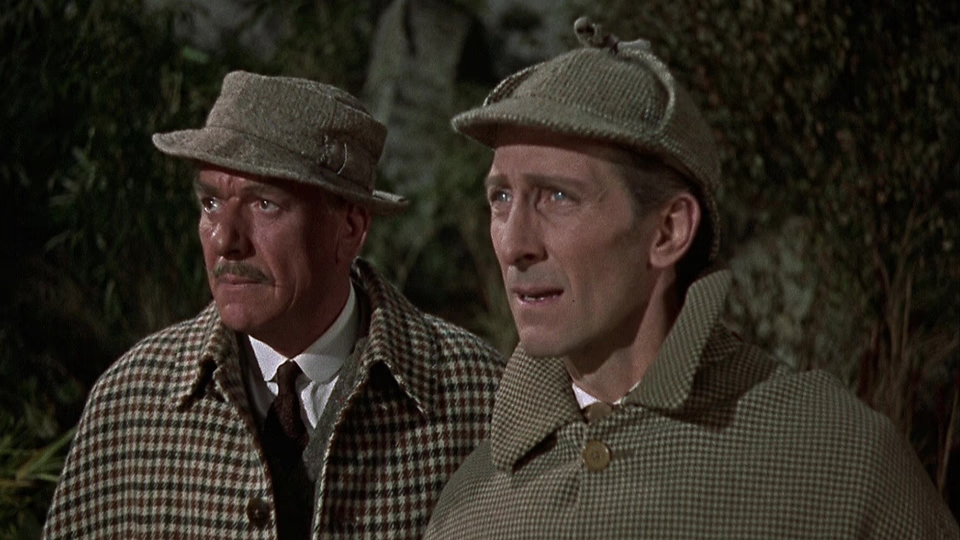The Hound of the Baskervilles

There are few things more satisfying than watching a classic story come to life in just the right hands. Hammer Films, known primarily for their blood-red takes on horror icons like Dracula and Frankenstein, turns their gothic sensibilities to Sir Arthur Conan Doyle’s most famous Sherlock Holmes tale with splendid results.
Peter Cushing makes a commanding Holmes, despite being physically shorter than the literary detective. What he lacks in inches, he more than compensates for in presence. Cushing’s Holmes is a man of relentless intelligence and barely concealed impatience with lesser minds, yet he avoids making the character cold. His Holmes delights in the game, wielding props from pipes to whiskey bottles with theatrical flourish while never descending into caricature. That the film works despite Cushing’s absence for nearly a quarter of the running time speaks volumes about the foundation he establishes early on.
As Watson, André Morell deserves special commendation. Unlike the bumbling comic relief that Nigel Bruce offered alongside Basil Rathbone’s Holmes, Morell gives us a Watson of competence and dignity—a proper physician and veteran, as Doyle intended. The scenes between Cushing and Morell crackle with the comfortable rapport of longtime friends, and Morell gamely suffers the indignity of sinking neck-deep in moorland mud without sacrificing his character’s essential gravitas.
Christopher Lee, so often cast as the monster in Hammer’s productions, brings aristocratic bearing to Sir Henry Baskerville. His performance reminds us that Lee was always more than just a towering physical presence; he conveys the complex mixture of stubborn courage and ancestral dread that the role demands.
The supporting players are mostly excellent, particularly Miles Malleson as a sherry-loving bishop, providing welcome moments of humor. The exception is Marla Landi, whose Italian accent stubbornly refuses to pass as Spanish, and who simply lacks the screen magnetism to match Lee in their scenes together. One wonders what an actress of Claire Bloom’s caliber might have brought to the role.
Director Terence Fisher, Hammer’s most reliable craftsman, demonstrates his mastery of gothic atmosphere, particularly in an early sequence set in a ruined abbey. The crumbling stone, swirling mist, and shadows create a palpable sense of dread that rivals anything in his horror catalog. The film does suffer from technical limitations—too many obvious day-for-night shots with skies that magically change color depending on whether the scene was shot on location or at Bray Studios—but these are minor flaws in an otherwise handsome production.
The film represents a fascinating collision of talent: Cushing, one of cinema’s great character actors, finally claiming a lead role worthy of his abilities; Christopher Lee, playing against type as a sympathetic figure; and the Hammer horror aesthetic being applied to detective fiction rather than supernatural terror. The result leaves you wishing for more adventures with this particular Holmes and Watson pairing. In a genre often dominated by fog machines and false scares, here is a mystery that succeeds through character, atmosphere, and good old-fashioned storytelling.